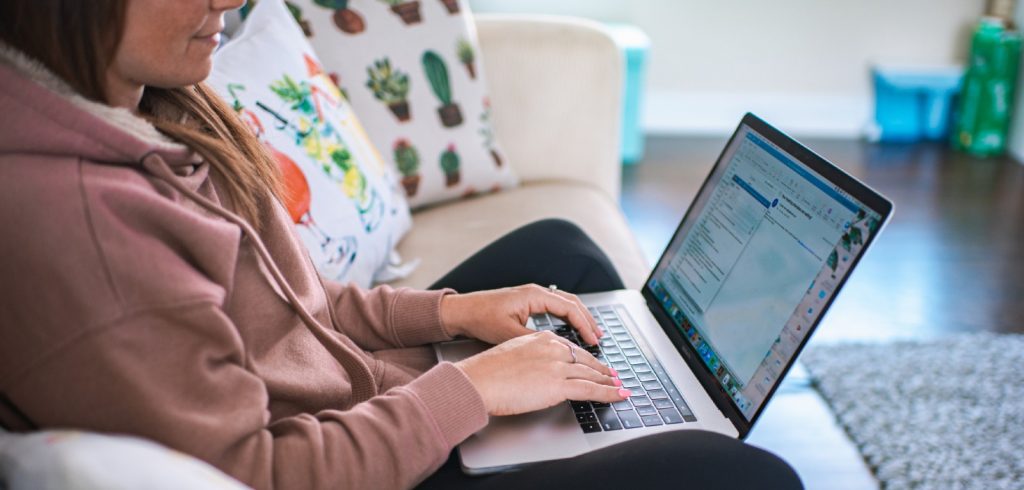Let’s talk about exits.
Specifically, let’s talk about the way you exit the email interaction you’ve just had with your reader or an email you’ve exchanged with a client.
But first, if someone’s reading an email you sent, consider the success you’ve had breaking through the clutter to get that person to open and read your email.
But now it’s time to say good-bye. What should you do?
Let’s review some of the most important email signature line best practices to bid a fond farewell.
Getting Ready for Good-bye
Prepare for your exit by asking yourself a few relevant questions:
What was the nature of your visit? Was it suit-and-tie formal and super-professional? A little more casual? A friendly neighborly chat? Or perhaps a chance to really surprise and wow the reader with something unknown and unbelievable, yet true?
Who is your target reader? Corporate business decision maker? Casual reader at home who is checking out a few emails during commercials in the game? A prospect you’d love to work with?
Further, as this person prepares to leave your email, what exactly do you want them to do?
How to Say Ciao
Your email signature line will typically reflect the responses to the questions you’ve asked. If you’re looking for formality, your email signature will likely be restricted to something cordial, even a polite “sincerely” bow, with your name, company, title, and possibly a web link.
Along those lines, here are some examples from ConnectYourCare.com, the health care administrator. After politely informing that coverage has been denied, they conclude:
If you have any questions regarding your account or this claim,
please call Customer Service at 855-687-2128.
Sincerely,
ConnectYourCare Customer Service
Stiff and buttoned down? Yes. Helpful? Well, you have a number you can call to be told why they can’t help you. Formally and sincerely.
If your interaction is more casual, your exit line can be, as well. It might include some farewell wishes that makes sense in context. You might include an email signature tag line — “to your health,” “to your success,” “to life.”
Dave Dee, with GKIC Marketing, finishes his emails with a similar, casual, yet playful tag line:
“Kick Butt and Make Mucho DEE-nero!”
(signature)
Dave Dee, GKIC
If you have a specific goal in mind for the reader to take that is beyond the explicit aim of the email, you can use your email signature to get that across:
To a skinnier you,
Joe Skinero
www.SkiniU.com
Read 50 Ways to Lose Your Blubber
Further, you can adjust your signature to further push the email’s call to action. Like Joshua Boswell’s signature for the AWAI Secrets of Writing for the Christian Market program. Note the salutation followed by the credibility-enhancing ordination and six-figure exultation. The signup link just beckons to be clicked. Amen.
To your success,
Joshua Boswell
Ordained Minister and Six-Figure Copywriter
http://www.awaionline.com/signup/christian-writing/
Don’t Trip as You Leave the Email Door
Be sure not to fall flat on your face as you make your own email exit by following these email signature line best practices:
- Don’t be the guest who never lets go of the door handle. Don’t list every possible way of contacting you, your landline, mobile number, fax number, mother’s phone number, aunt’s physical address, and every social media platform under the sun. Limit your calling card to the most important stuff: Name, phone number, website, key social media.
- Don’t say, “Hi, nice to meet you” on your way out. That’s what you do when you add your email address as part of your signature. They know your address, they’re reading your email, and they can click reply. Say bye, not hi.
- Don’t leave someone else’s calling card. Quotes you like might be inspiring, but won’t encourage readers to look you up again. Instead, they’ll be off to follow that quotee rather than thee.
- Don’t complicate your email “tech.” When you’ve got a super-sophisticated, graphic-intensive HD video of your thumbs-up salute, it’s not likely to show up well on your readers’ screen. In fact, any formatting-intensive component is subject to the whims of the technology gods, even more so on mobile devices. So keep your email signature line simple and low-tech.
From Adieu to Au Revoir with Your Email Signature Line
Your email signature line has a lot to do with whether your readers will take the action you want.
You’ll want them to look you up again as the authority on the subject you wrote about, the person to call on for expert services, or the destination for getting exactly the product or service they were hoping to find.
To make your exit a temporary one, have a signature line that matches the tone and the readers. Be formal when appropriate, lively, spunky, or funny when that makes sense, too.
Include (but don’t overwhelm with) contact information. Add personality when suitable (yours, not someone else’s quote). Keep the formatting simple and readable on any device. Enhance your credibility with relevant titles and information. Link to an irresistible call to action.
Say good-bye the right way in your emails. And when you follow the email signature line best practices I’ve outlined in this article, you’ll go from adieu to au revoir, from good-bye to we’ll definitely be seeing each other again soon.
And if you’re interested in some tips on how to make your email’s more engaging overall, you might want to check out Ben Settle’s article on how to write emails more effectively here.






